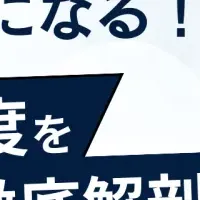
OTORIO Introduces the Innovative CSAV Framework for Cybersecurity Risk Assessment in OT Assets
OTORIO Unveils CSAV Framework
In the rapidly advancing field of cybersecurity, OTORIO has announced a significant breakthrough for operational technology (OT) cybersecurity with the introduction of its CSAV (Compensating Scoring for Asset Vulnerability) Framework. This innovative methodology aims to provide organizations with the tools necessary to evaluate and quantify risks associated with OT assets that do not have published Common Vulnerabilities and Exposures (CVEs).
The Necessity for Change
In a world where cybersecurity threats are constantly evolving, many organizations mistakenly perceive the absence of published vulnerabilities as an indicator of security. However, Yair Attar, Co-Founder and CTO of OTORIO, highlighted during the recent S4*25 conference, the urgency of reevaluating this assumption. Cybersecurity teams often overlook the risks of OT devices that remain unexamined due to a lack of documented vulnerabilities. This outdated approach can lead to severe ramifications, as evidenced by the numerous incidents where vulnerabilities were exploited before being acknowledged formally.
Over the past eight years, approximately 66% of vendors cited in CISA advisories have only been mentioned once, indicating a recurring difficulty in assessing risks inherent to those devices. This shortcoming has made it critical for industries to adapt and rethink their vulnerability assessment strategies.
The CSAV Framework in Practice
The CSAV Framework provides an alternative by enabling organizations to utilize specific vendor and asset parameters, thereby facilitating an accurate risk evaluation that extends beyond standard CVE reporting. It fills a vital gap in the risk assessment landscape by allowing teams to identify potential hazards that traditional databases often overlook.
To exemplify the framework's importance, OTORIO presented a case study analyzing the infamous Stuxnet cyberattack, which significantly impacted Siemens WinCC systems. The Stuxnet worm, notorious for being one of the most sophisticated cyber threats against OT environments, exploited vulnerabilities long before those vulnerabilities were documented in any CVE database. The CSAV framework aims to prevent such blind spots by establishing a proactive and structured approach to OT risk evaluation.
A Call for Industry Collaboration
Rather than positioning the CSAV calculator solely as a standalone tool, OTORIO invites collaboration from industry experts, asset owners, and cybersecurity leaders. The goal is to develop and refine the CSAV framework continuously, creating a more comprehensive approach to OT risk modeling. Yair Attar emphasized that the CSAV framework signifies more than just a tool; it's a significant shift in mindset for the cybersecurity industry. It serves as a call to action to rethink how unknown risks are assessed and mitigated in OT environments.
Organizations and cybersecurity professionals are encouraged to participate actively, explore the CSAV Framework, and contribute to its development. By doing so, they can help redefine the landscape of cybersecurity risk assessment for OT assets, embracing a future where hidden risks are tackled head-on.
For additional information, hands-on experience with the open-source CSAV calculator, or opportunities to collaborate in the evolving cybersecurity domain, please reach out to OTORIO directly through their official contact channels.
Conclusion
With the ever-increasing complexity of cyber threats, the CSAV Framework from OTORIO presents a timely and essential solution for OT professionals. By shifting focus to a broader understanding of risks associated with operational technology, organizations can better protect their assets and remain resilient against emerging cyber threats.
Topics Other)










【About Using Articles】
You can freely use the title and article content by linking to the page where the article is posted.
※ Images cannot be used.
【About Links】
Links are free to use.